It’s a fact that pain can take a toll on one’s quality of life. Not only that, but it can lead to higher medical bills. It’s no surprise that chronic pain is one of the most common chronic conditions in the United States.
As a healthcare provider, it can be disheartening to witness your patients endure chronic pain while simultaneously navigating the intricacies of medical billing. It’s essential to find ways to streamline the
process and make it easier for both you and your patients.

By staying up-to-date with the latest billing guidelines and practices, you can reduce headaches and provide the best possible care for your patients.
This article will explore valuable insights on how to bill pain management services effectively and efficiently. By following these tips, you can streamline your billing process and ensure you are correctly getting paid for the services you provide.
SERVICES INCLUDED IN PAIN MANAGEMENT

PAIN MANAGEMENT
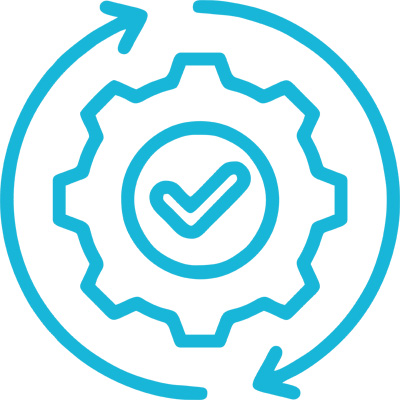
Comprehensive Pain Assessment:
Medication Management
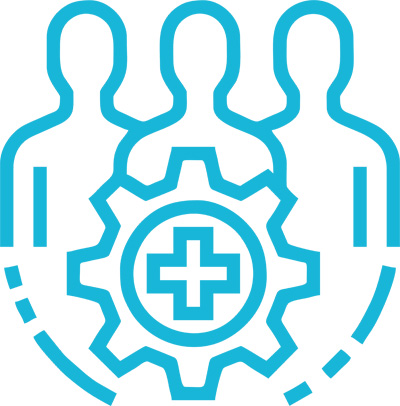
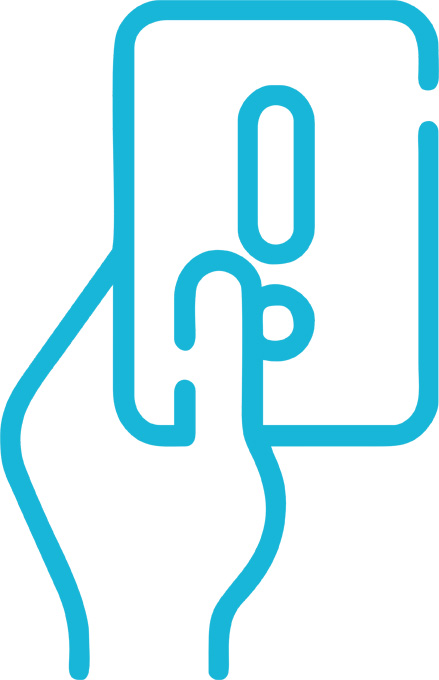
Interventional Pain Procedures
Psychological and Behavioral Therapy:
Incorporating techniques such as cognitive behavioral therapy (CBT), relaxation techniques, biofeedback, and counseling to address the emotional and psychological aspects of pain.


Alternative and Complementary Therapies
Rehabilitation Services

CODING AND BILLING STRATEGIES FOR PAIN MANAGEMENT SERVICES
Coding and billing for pain management services require accurate documentation and adherence to specific coding standards to ensure proper reimbursement and compliance. There are some key strategies to consider when coding and billing for pain management services:
UNDERSTANDING CODING SYSTEMS
Familiarize yourself with the relevant coding standards, primarily the Current Procedural Terminology (CPT) codes and the International Classification of Diseases, Tenth Revision (ICD-10) codes. CPT codes describe the procedures performed, while ICD-10 codes capture the diagnoses or reasons for the procedures.
ACCURATE DOCUMENTATION
PROPER SELECTION OF EVALUATION AND MANAGEMENT (E/M) CODES
When billing for E/M services, ensure that the level of service (e.g., office visit) is appropriately selected based on the complexity and documentation of the encounter. E/M codes are determined by factors such as history, examination, and medical decision-making.
SPECIFICITY IN DIAGNOSIS CODING
PROCEDURE CODING
MODIFIERS
MEDICAL NECESSITY AND PRIOR AUTHORIZATION
COMPLIANCE WITH LOCAL COVERAGE DETERMINATIONS (LCDS)
STAY UPDATED ON CODING CHANGES
STAFF EDUCATION AND TRAINING
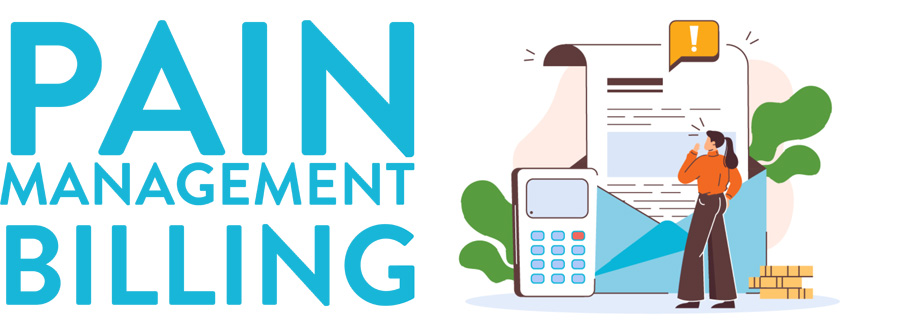
TOP CHALLENGES ENCOUNTERED IN PAIN MANAGEMENT BILLING
PRIOR AUTHORIZATION
Insurance companies often require prior authorization for specific pain management treatments or medications. This process can be time-consuming and may delay patient care. To tackle this, it’s crucial to have a dedicated team member or utilize technology solutions to streamline the prior authorization process.
Ensuring prompt communication with insurance companies and submitting necessary documentation promptly can help expedite the approval process.
LIMITS ON PROCEDURES
Healthcare professionals may face limitations on the number of times they can perform certain pain management procedures. To overcome this challenge, it’s important to carefully track and monitor the utilization of procedures to ensure compliance with payer guidelines. By implementing effective scheduling and documentation practices, you can optimize the utilization of procedures while adhering to the limits set by insurance providers.
POST-SERVICE PREPAYMENT CODING REVIEWS
Some insurance companies conduct post-service prepayment coding reviews, which can result in delayed payments for up to 180 days if claims are flagged for further consideration. To mitigate the impact of these reviews on your revenue cycle, it’s crucial to have robust coding and documentation practices. Ensuring accurate and comprehensive documentation, as well as regular internal coding audits, can help minimize the chances of claims being flagged for review.
CONTROLLING CERTAIN DRUG COMBINATION PRESCRIPTIONS
Prescribing certain complex medications or combinations of drugs may require additional documentation and proof of medical necessity. To navigate this challenge, it’s important to stay updated on payer policies and guidelines related to specific drug combinations. Developing clear communication channels with patients and providing them with the necessary information can help facilitate the approval process for these prescriptions.
NO REIMBURSEMENTS FOR FEW THERAPIES
Some alternative non-pharmacologic treatments recommended by organizations may not be reimbursed by all payers. Having open discussions with patients about their insurance coverage and potential out-of-pocket expenses can go a long way in avoiding uncomfortable situations in the future. Exploring alternative payment options or offering financial assistance programs can help ensure patients can access these therapies without significant financial burden.
INSURANCE COMPANIES ARE OVERWHELMED
The volume of pain management billing claims and the time required for insurance companies to review them can result in delays and administrative challenges. Maintaining clear lines of communication with insurance companies and staying updated on payer guidelines can help expedite the billing and reimbursement process.
These are just a few of the challenges faced in pain management billing. It’s important to stay vigilant and adapt to changes in payer policies and industry regulations. By proactively addressing these challenges and implementing effective strategies, you can optimize your revenue cycle and ensure the financial success of your pain management practice.
WAYS TO AVOID ERROR & MISTAKES DURING PAIN MANAGEMENT BILLING
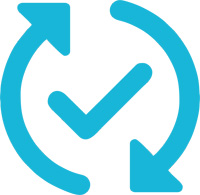
Stay Updated
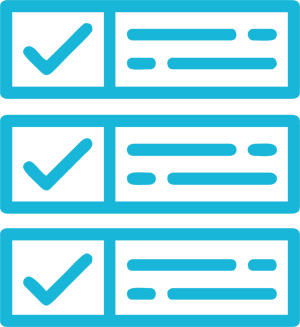
Ensure Complete Documentation

Regular Audits and Reviews
BEST BILLING PRACTICES

PAIN MANAGEMENT BILLING BEST PRACTICES
Timely and Accurate Documentation
Ensure that all patient encounters, procedures, and services are documented accurately and promptly. Timely documentation allows for timely billing, reducing the risk of delayed or denied claims. Accurate documentation also supports proper coding and billing, leading to improved reimbursement.
Verify Insurance Eligibility and Benefits
Before providing services, it’s important to verify the patient’s insurance eligibility and benefits. This step helps identify any potential coverage limitations or requirements, such as pre-authorizations, that need to be addressed before billing. By verifying insurance information upfront, you can minimize claim rejections and reduce accounts receivable.
Clean Claim Submission
Submitting clean claims is crucial to ensure timely reimbursement. Try and implement processes to review claims for accuracy and completeness before submission. This includes validating patient demographics, procedure codes, diagnosis codes, modifiers, and any necessary supporting documentation. By regularly monitoring and addressing any claim rejections or denials promptly, you can avoid delayed payments.
Effective Claims Follow-Up
It pays to establish a systematic approach to follow up on unpaid or underpaid claims. By tracking the aging of accounts receivable, you can proactively address any outstanding claims. Utilize technology and automated systems to streamline the follow-up process and ensure timely payment. If you can identify trends in denials or delays, you’ll be able to implement corrective actions to minimize future issues.
Streamlined Revenue Cycle Management:
To optimize the entire billing and reimbursement workflow, consider implementing efficient revenue cycle management processes. This includes patient scheduling, insurance verification, coding and documentation, claim submission, payment posting, and accounts receivable management. Streamlining these processes can improve efficiency, reduce billing errors, and accelerate revenue collection.
Financial Counseling and Patient Education
An often overlooked practice, improving patient understanding of their financial responsibilities and educating them about insurance coverage, deductibles, co-pays, and any potential out-of-pocket expenses is extremely beneficial. Effective financial counseling can help minimize patient billing inquiries and reduce the likelihood of unpaid balances. Clear communication with patients about their financial obligations not only promotes timely payment and reduces accounts receivable, but helps create a stronger relationship as well.
Performance Analytics and Reporting
Data is king, and pain management is no different. Utilize data analytics and reporting tools to monitor key performance indicators (KPIs) related to accounts receivable, revenue cycle management, and billing operations. Regularly review and analyze these metrics to identify areas for improvement, measure performance, and make data driven decisions to enhance revenue collection.
Using these best practices, you can streamline your billing processes, improve cash flow, and reduce accounts receivable. It is essential to regularly assess and adapt these strategies to the unique needs of your practice, staying up to date with industry trends and regulatory changes to ensure continued success.
CONCLUSION
By leveraging the insights and strategies shared above, you can enhance your practice’s financial performance and optimize your revenue potential. Remember, pain management billing requires attention to detail, ongoing education, and a commitment to staying updated with coding and compliance guidelines. With the right approach and a reliable partner like COSENTUS, you can navigate the complexities of pain management billing with ease. Let’s unlock the full potential of your practice and ensure your patients receive the care they deserve!

